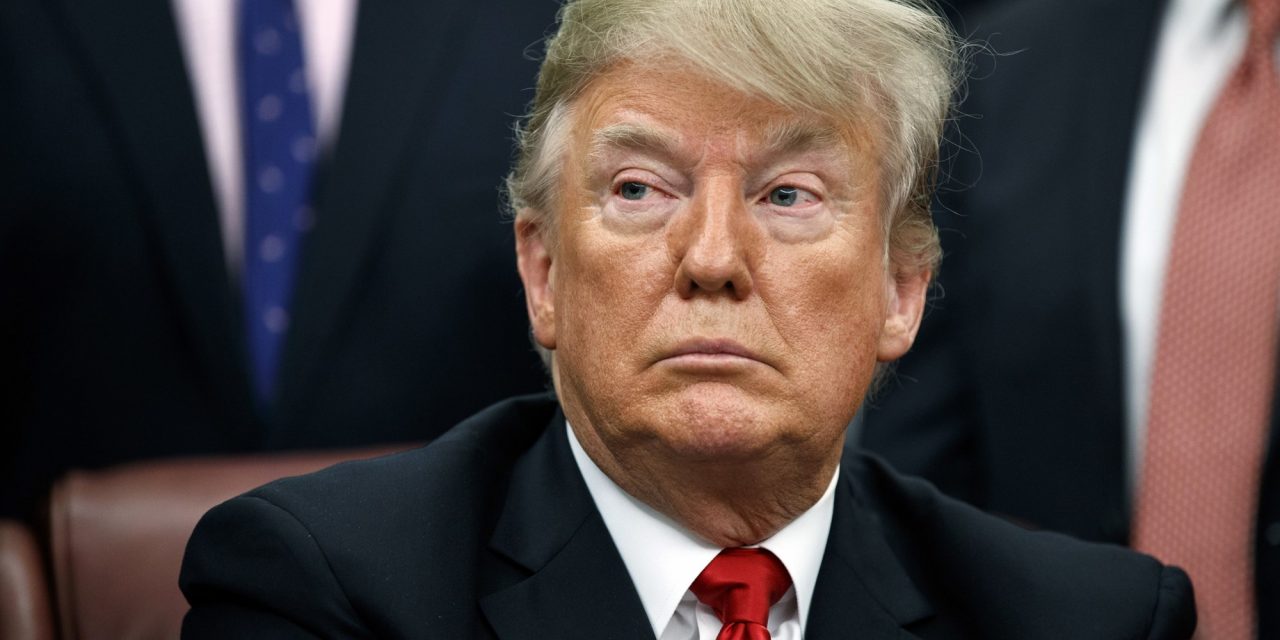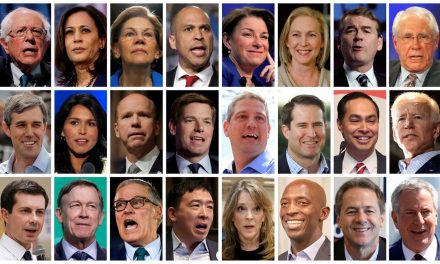Image Credits: Evan Vucci / AP.
Every time I go back and read my December 2015 piece on Donald Trump and the missing white voters of the 2012 election, I get a sick feeling in my stomach. I had identified exactly how the Republicans could win the 2016 election, but I just couldn’t bring myself to believe they would pull it off. In truth, that piece should be bracketed by two other pieces of analysis I did on this subject. The earliest came in July 2013 when I wrote about the Republicans’ decision to drop “the idea that they need to do better with Latinos and adopt the idea that they need to do even better with white voters.” The latter one was written a few days after Donald Trump was elected president. I called it “Avoiding the Southification of the North.”
All three articles talk about the future of the Republican Party in the context of their demographic challenges. As the country becomes more ethnically, racially and religiously diverse, the GOP loses market share. The same happens as young people replace old people in the electorate. The Republicans could respond by abandoning some conservative principles. But they would rather try every other option first. One strategy is to use their power to shift the electorate in their favor. By making it harder for young people to vote and by using every available tool to discourage minority voting, they hope to win a few more elections before they have to actually appeal to these voters. Another strategy is to get white people to think as white people. Here is how I described this in my 2013 piece:
Accusing the Democrats of socialism, which is a race-neutral way of accusing the party of being beholden to the racial underclasses, has been proven insufficient. The only hope for a racial-polarization strategy is to get the races to segregate their votes much more thoroughly, and that requires that more and more whites come to conclude that the Democratic Party is the party for blacks, Asians, and Latinos.
That is, indeed, how the party is perceived in the Deep South, but it would be criminal to expand those racial attitudes to the country at large.
The Republicans are coalescing around a strategy that will, by necessity, be more overtly racist than anything we’ve seen since segregation was outlawed.
In retrospect, the most interesting twist in this is that the Republican establishment resisted Donald Trump’s candidacy despite the fact that he was attempting the very strategy that they had settled on when the decided not to follow up Mitt Romney’s loss by passing comprehensive immigration reform. When the rejected the Republican National Committee’s post-2012 autopsy report that said they needed to lighten up on gays and Latinos, they were consigning themselves to the white nationalist alternative. When Trump took this message to the Rust Belt, he was doing what I suggested the GOP might do in my missing white voters piece. In this section, I am comparing the prescriptions of Karl Rove, who thought the future was in winning Latino voters, and Sean Trende’s of RealClearPolitics, who argued that maximizing the white vote was just as viable as a strategy.
They agree that there is a big pool of white voters out there who voted for McCain but not for Romney. And they agree that their profile is basically that of blue collar workers in the Midwest rather than evangelicals in the South. They are, roughly, the “Reagan Democrats” of Macomb County, Michigan first identified by Stanley Greenberg back in the 1980’s.
It seems to me that these are the type of folks who are gravitating to Donald Trump…In other words, folks who didn’t vote in the 2008 or 2012 caucuses are more likely to support Trump than voters who did participate. Trump is attracting new voters and voters who had dropped out.
His platform, if you can call it that, is pretty well designed to appeal to this demographic. He opposes the Trans-Pacific Partnership and Mexican immigration, and he promises to keep scary Muslims from entering the country. He’s not hammering on traditional social values issues that don’t interest these disaffected voters. He’s making more of a generalized racial, religious and tribal appeal. And he’s saying he’ll make America great again, with the unstated premise that he can preserve what’s great about America and restore what’s been lost. If you want to get missing white voters to the polls, Trump’s approach seems capable of doing that.
But these voters probably aren’t going to turn out in the same numbers for a Republican who seems like a Mitt Romney retread. They may have some pretty conservative or even intolerant attitudes, but they aren’t necessarily Republicans at all. They’re probably as likely to nod their heads at a Bernie Sanders speech about breaking up the big banks as they are to cheer a Trump proposal to stick it to the Chinese. Their default position at this point is, I believe, to just stay home. They didn’t vote in 2012 and they won’t vote in 2016 unless they get something significantly different on the menu.
As I look at this analysis now, it seems like something inexorable was going on, as if the Republican Party was headed in a white nationalist direction driven less by desire and consensus than by need. When Trump came along to fill that need, they didn’t even recognize what was happening. Even today, they don’t seem to fully understand why their base sticks with him and gives them no room to maneuver. But there are limited ways to win elections, and once you decide that you’re not going to moderate your positions to appeal to a changing country, you’re stuck with doubling down on white identity.
When I watch political scientists debate where Trump fits in among our previous presidents, I often think they’re missing the fact that the GOP only had two doors to go through, and they chose the one that led here.
The only real debate is about what happens next. All along, the white identity/voter suppression approach was a stalling tactic. It was a way to maintain power just a little longer without having to abandon conservative principles. Eventually, however, it was doomed to be taken out by the demographic tide.
Unless, the exercise leads instead to a breakdown in the system itself. That’s what the political scientists are divided on now. One camp sees Trump as the death-cry of the Reagan Revolution and the other seems him as a mortal threat to democracy. They could both be right, so long as Trump goes peacefully after being defeated in 2020. But if the conservative revolution doesn’t end then, it may continue in an autocratic form.







